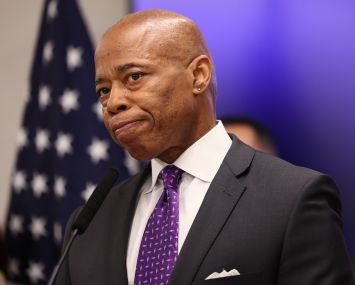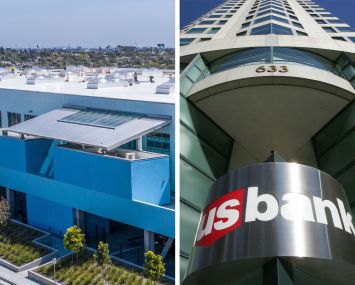Presented By: Placer.ai
From Discount to Luxury, Retail’s Strength Was a Positive Surprise for 2023
Despite the year’s overall volatility, job growth, wage growth, and a dearth of new retail development made for a prosperous and promising year for the sector in 2023, Michael Puline, Vice President of National Accounts at SHOPCORE Properties, said on the recent virtual custom event, “The Retail Rewind & Outlook: Recapping Retail in 2023 & Discussing What’s In Store for 2024.”
“If you look across the vast majority of retailers, they’re healthier today than they were four years ago,” said Puline. “Retail’s doing quite well.”
The December 12 event, also featuring Ben Witten, Head of Real Estate at Placer.ai and Handlin Duley, Vice President at L3 Capital, was hosted by Commercial Observer Partner Insights, and presented by Placer.ai.
Witten kicked off the discussion with an overview of Placer.ai’s capabilities.
“Placer.ai is a location analytics platform for any physical place in the United States,” said Witten. “We’re looking at consumers visiting locations, employees returning to office, migration events. We’re observing, analyzing and extrapolating raw data, and ultimately presenting insights based on those 30 million anonymized mobile devices.”
Witten said that Placer.ai can see across over 1.5 billion visits to retail locations and provide a multitude of insights on items such as customer demographics, the impact of events, the visitor journey, and where they might visit before and after visiting a location.
Turning the discussion to the state of retail, Puline said that while luxury retail has had its naysayers, its performance leads to different conclusions.
“I keep hearing people talk about how luxury’s struggling,” Puline said. “And compared to 2021 and 2022, when we had $3 trillion worth of stimulus, it’s down a little bit. But it’s still up 40% from 2019.”
Witten recalled how, at his previous position as Vice President – Finance & Asset Management for Trademark Property Company, he was surprised in the early days of the pandemic by the strength of luxury retail.
“It was interesting to see Louis Vuitton, Gucci, and Rolex putting up record numbers. It’s pretty insane,” said Witten. “I don’t think anybody expected that to play out for the luxury sector.”
Duley mentioned that both luxury and discount retail have benefitted from strong spending and tenant demand.
“Obviously, inflation’s still very high,” said Duley, “but all the stimulus money that was dispersed post-Covid is still working its way through the economy, and that’s often to the benefit of our tenants.”
He also mentioned that most low-performing retailers failed to survive the worst of the pandemic, creating a “pruning effect” that left mostly stronger retailers now competing for space.
And while he notes that the investment sales side has faced greater challenges, top properties continue to separate themselves from the rest, “especially with landlords that either have to de-leverage or have very high floating debt and can’t reinvest some of those dollars into their properties,” said Duley. “I think you’re going to see tenants really compete for those spaces.”
Some tenants are even taking on the capital risk themselves and doing larger, more substantial build-outs. Both Dyson and Hyundai were cited as recent examples.
Witten then shifted the conversation to the prevalence of mixed-use, as “the lines continue to blur between asset types, and you see more and more integration, vertical and horizontal, across retail, office, multifamily and the like.”
Duley said he believes this type of integration will be “incredibly important” moving forward.
“Within retail, we’re seeing more of a focus on balancing F&B uses and experiential retail with traditional hard and soft goods shopping,” Duley said.
He pointed to the Miami Design District as a prime example of tenant desire for these types of mixed-use spaces.
“That’s a small submarket that’s gotten very hot over the past five years, and rents have gotten to a point where only luxury players can afford to be there,” he said.
“What they’re doing, because they want a well-rounded shopping experience for their consumers, is you have brands like Fendi and Cartier that have their traditional hard and soft goods shopping stores, but then they’re opening up second locations,” said Duley.
He notes that Cartier, for example, has an experiential museum concept on the north end of the same block as their goods store, and that Kith has opened an ice cream shop to complement its apparel store.
“These tenants understand that a well-rounded shopping experience includes more than just hard and soft goods,” said Duley. “That’s going to be an example for landlords going forward.”
Witten emphasizes the importance for experiential spaces serving a multitude of purposes.
“Having cohesive integration is so important, where it’s not just nights and weekends that the asset is activated, but all day,” said Witten. “It’s your core power yoga, your coffee shop, your brewery, or the place to meet after work and all through the day. The mixed-use development game is expensive and complicated, but when it works, the magic is pretty incredible.”
That all said, Puline made the point that successfully operating a mixed-use space still has its challenges, and will really only work if appropriately scaled.
“People don’t appreciate how hard it is. Mixed-use is very difficult,” said Puline. “If you don’t have scale, it can be exceedingly difficult to have a project become successful because you have to ask, can a project support itself, or do I need to have the surrounding community there to support it.”
This need, then, comes with its own additional expenses, such as parking, which can quickly add up.
One hedge against this is for a retail project to create the equivalent of amenities for the community.
“Then, if you’re able to monetize those amenities, you can help offset the cost,” said Puline. “That’s what a community wants in a mixed-use project. They want amenities for another place to go and spend time with their friends and family.”
Witten also mentioned one surprising factor that had an impact on retail in 2023 – the ubiquity of Taylor Swift.
“Our marketing team pulled this together, showcasing the impact of these Taylor Swift concerts and the impact to you know, Michael’s stores in these markets,” said Witten, showing a graph illustrating a 25% rise in visits to Michaels stores in Swift’s tour cities during the dates of her tour stops. “A lot of the Swifties got into building bracelets and jewelry, and they did a partnership with Michael’s.”
“With the Barbie movie and Taylor Swift, we saw an unprecedented amount of co-branding opportunity,” said Duley. “There was a site in Chicago, a vacant site next to the highway, where they dropped in a couple of containers, painted them pink, and did a Malibu Barbie pop-up for adults and children. For four months, there were lines around the block at a site that would otherwise be vacant. That speaks to the power of co-branding opportunities. When they come along, it’s a mistake to not pay attention to them.”
Looking ahead to 2024, Duley believes that the investment sales market for retail will continue to crawl at a slow pace.
“I think the lack of investment sales will potentially cause more public overreaction in our space,” said Duley, “so maybe you’ll see some private takeouts of public real estate, because the lack of comps and appraisers not knowing what to do when there aren’t any trades happening could present some opportunities to private buyers. And the bid-ask spread is still extremely wide.”
Witten pointed out that actual retail fundamentals are as strong as they’ve been in around 15 or 20 years. Given this, he believes that capital allocations, which have shrunk in recent years, will grow closer toward the larger percentages from years past, especially with office falling out of favor.
“My prediction is that institutional capital flows more toward retail once the dollars start transacting, and once there is some price discovery,” said Witten.
Puline, meanwhile, believes that the sector will continue to see strong tenant demand and rent growth, and very little in the way of supply, leading to another prosperous year.
“I think retail is going to be one of the healthiest parts of real estate,” said Puline, “and I’m really excited about that.”


